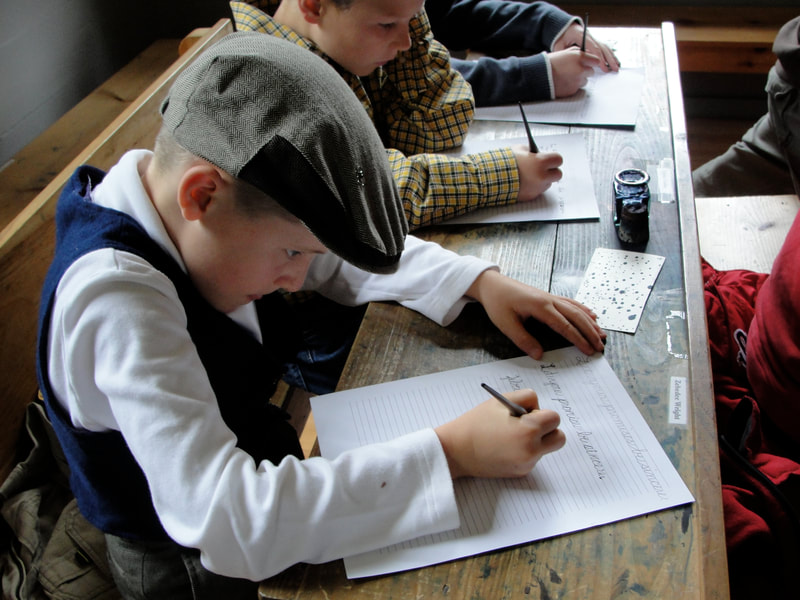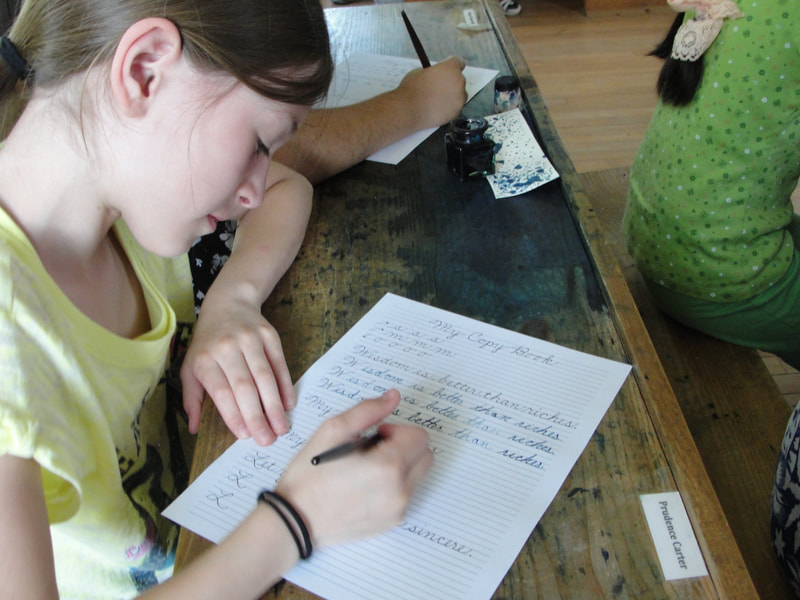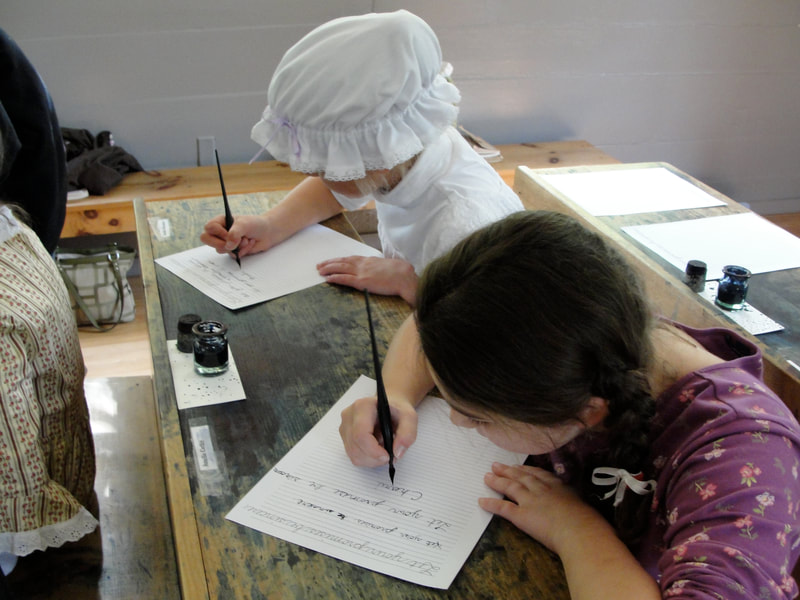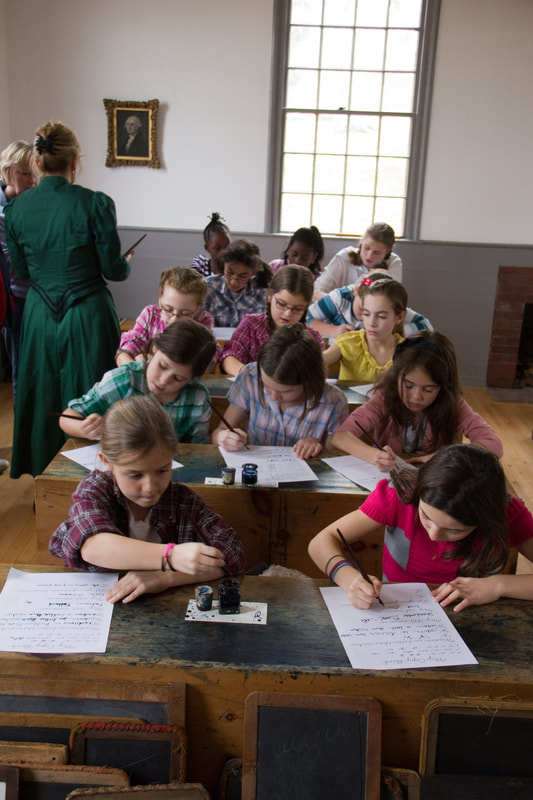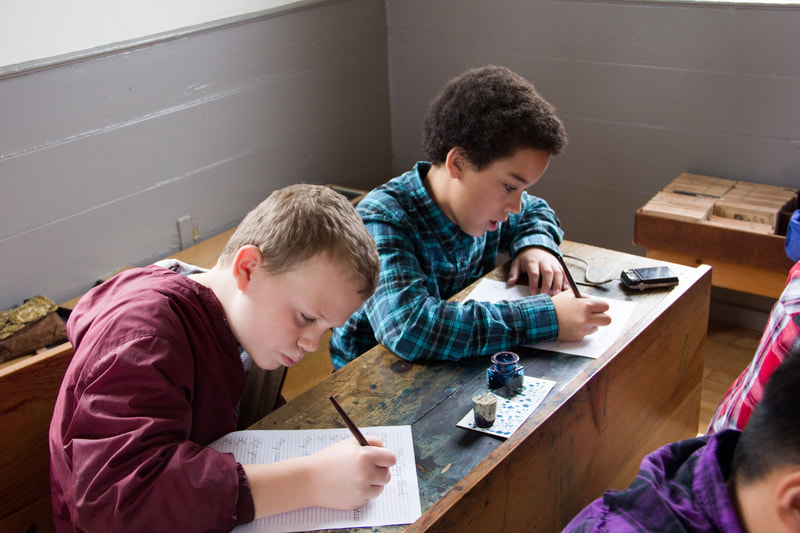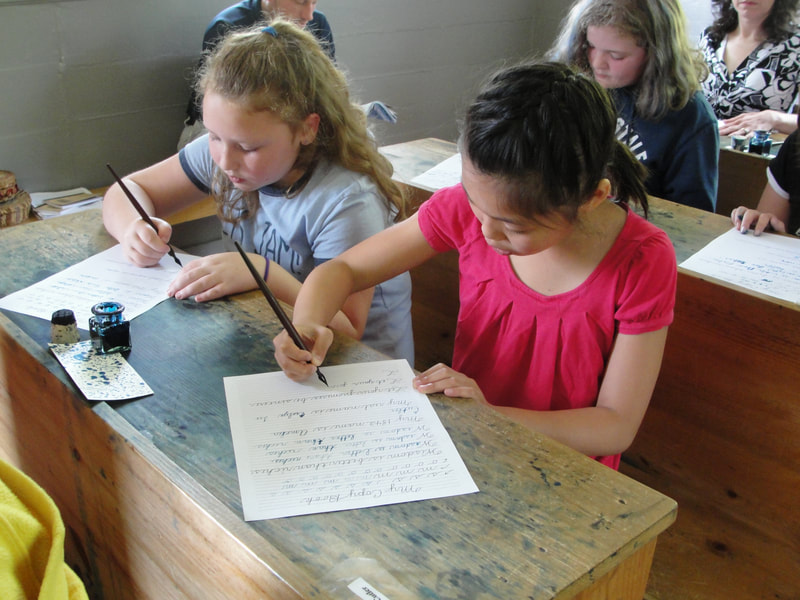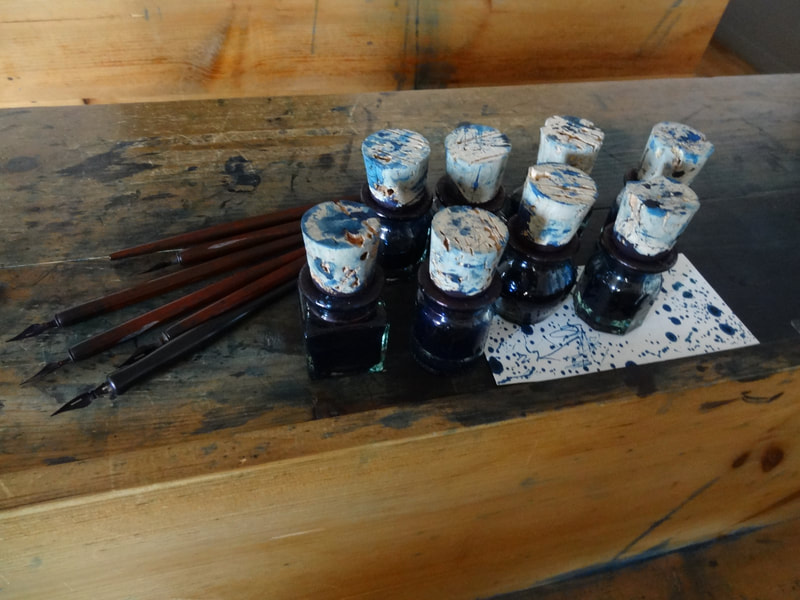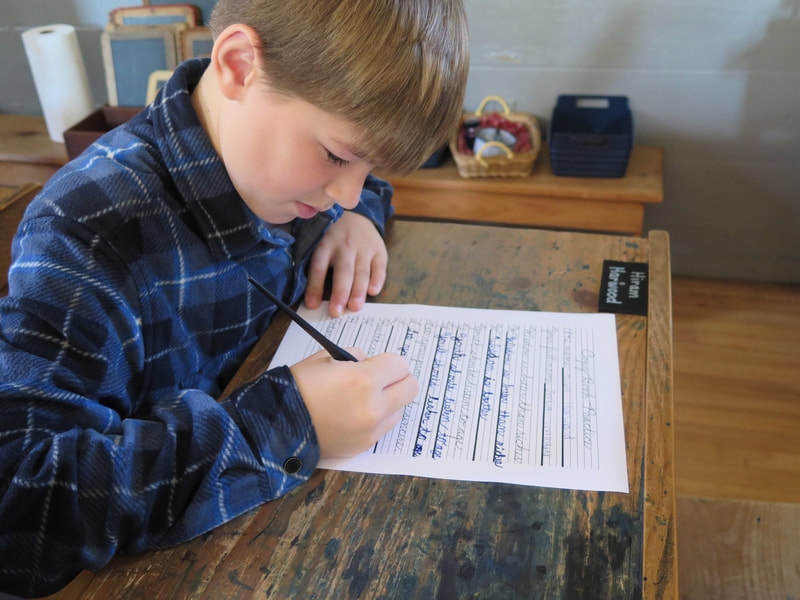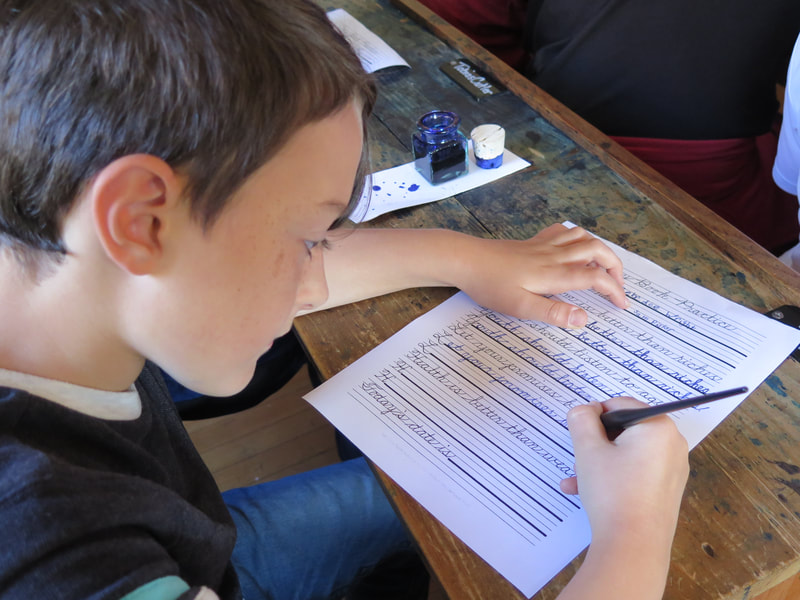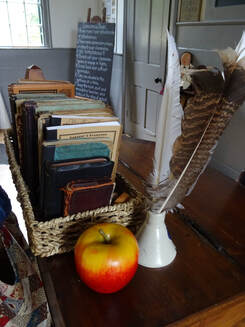 Where There's a Quill, There's a Way Submitted by Susan Fineman As a schoolmarm in a one-room schoolhouse living history program, I regularly research the lessons and materials used in the 19th century, particularly our time frame of the 1840's. There are numerous references in literature and texts about making, mending, and using quill pens, and it appears they were used quite commonly until about 1830. It used to be the case that when visiting students learned they would be writing with quill pens in our schoolhouse they were all excited... until... they found out how very difficult it was to actually write with them! Students left the schoolhouse with blue stained fingers and returned to their own schools proud of their efforts, but appreciating their gel pens, markers, and pencils even more. No More Quills for Us…Price Prohibitive! Years ago we switched to steel tip nibs on pen holders because actual quills became too expensive and hard to find even on the internet! They wore out quickly in untrained hands and the cost became prohibitive. We decided to economize and went for the long-lasting Nib #A-5 found at www.paperinkarts.com. This nib has a small ink reservoir built in for a better flow. For ink, we found Parker QUINK ink works best for our lessons and we’ve been using it for years…available on Amazon ($10-$14/bottle). We can justify the switch from quills historically, as steel pens came into more regular use around the 1820’s when they went into large scale manufacture under Joseph Gillott in Sheffield, England. First-Person Quill Recollection I was thumbing through a book of recollections of early Nashua, NH residents and came across a wonderful excerpt about quill pens, as told by Hannah Eayrs Barron, who was born c. 1808. She tells the story of obtaining quills from a Mr. Cosmo Lund and his widowed sister Lucy who lived on a nearby farm together until the day they died. “They used to keep geese and very kindly gave to the school children in the neighborhood quills. Often I have received quills from them with which I learned to write. No such thing as a steel pen or gold pen was known at the time. And every scholar who was large enough to learn to write was supplied with a blank writing book, made of foolscap paper unruled. Having no lead pencils the scholars manufactured for themselves what they called a plummet, which they made by making a shallow mold into which was poured melted lead. After it was cold, it was smoothed off to an edge and with the aid of a straight ruler we were able to mark our writing books with straight lines. The teachers would make our pens of the quills which we furnished. If we did not find quills enough where geese were kept, we had to buy them at the stores, called Dutch quills, which the teachers manufactured into pens for all those who were large enough to learn to write until the scholars were large enough to make their own pens. The teachers set all the copies (wrote a sentence in their own hand that the scholars would copy) which, after the scholars were able to write a running hand, was usually some moral or religious or historical sentence or maxim. Every scholar who was large enough to write was expected to write twice a day, which came after the first reading and before the recitation of any other lesson. Those scholars grew to be useful members of society and I cannot call one to mind who went to school in my day, who was ever put in jail or prison for a crime or was much given to intemperance."…Hannah Eayrs Barron Some Interesting QUILL FACTS Learned Along the Way: 1.) The Declaration of Independence, written by Thomas Jefferson, was calligraphed by a professional using a quill pen, not by Jefferson himself. The U.S. Constitution was also penned with a quill. 2.) The strongest quills are taken from living birds in the spring, the best being the five left outer wing feathers, because they curved away from the right-handed writer. 3.) You can wash quill pens gently in warm soapy water and they will regain their shape upon drying. 4.) The term penknife, came from the jackknife used for cutting the tips of quills. 5.) The Lewis and Clark expedition was fully documented in journals by Meriwether Lewis using quill pens. 6.) From John Jenkins (1855-1923) in The Art of Writing: "For the help of such youth as are accustomed to labor, and thereby have their fingers stiffened and rendered insensible of the weight of the pen, I have practiced the following method. A round piece of lead, an inch and a half in length, with one end sharpened, may be pushed up the barrel of the quill into the pith; this weight will at once be perceivable by the learner, and enable him more readily to acquire the command of the pen." 6.) Quill pens lasted about a week with regular use and sharpening. 7.) By the mid 1840’s quill pens were on their way out, replaced largely by steel pens. If your schoolhouse predates 1840 and you make use of quill pens, you may be interested in a number of links to their history: Facts and History of Quill Pens Quill Pen vs. Steel Pen Cutting Quill Pens from Feathers
0 Comments
Leave a Reply. |
Our early public schools systems were indeed disparate, but a common thread among early districts was that children of all ages were taught together in the one-room schoolhouse" Blog Archives
July 2024
|

